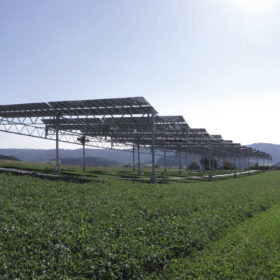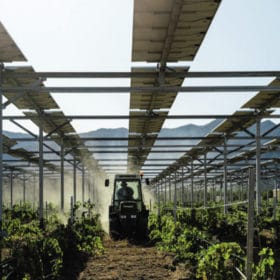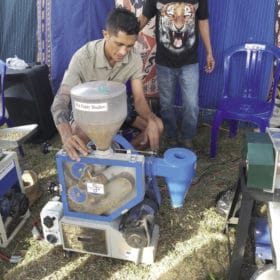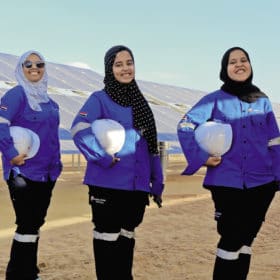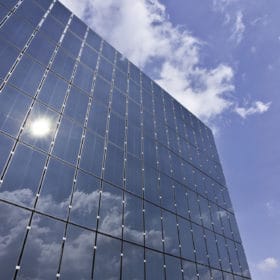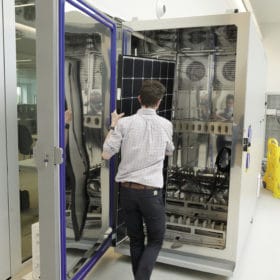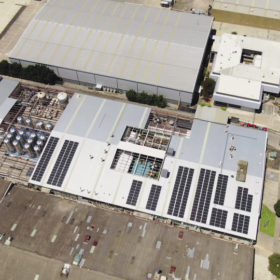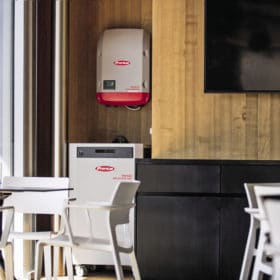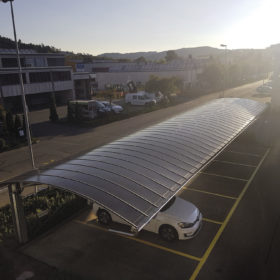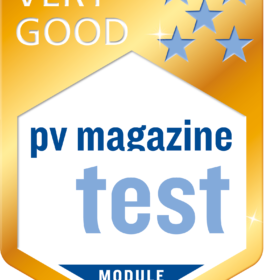Solar’s flexibility can be agriculture’s gain
Both solar and the farming industry are beginning to see potential in the combined use of land for food production and energy generation. And as innovators begin to experiment with different forms, it’s becoming clear that in most cases it is solar that will have to bend to the needs of agriculture, and not the other way around, to ensure a positive outcome.
An inclusive, rural European Green Deal through agrisolar
Combinations of sustainable agriculture with solar PV systems have immense potential in the EU, writes Miguel Herrero, policy adviser at SolarPower Europe, and the coordinator of the organization’s agrisolar workstream. According to SolarPower Europe’s most recent policy briefing, if agrisolar is deployed on just 1% of arable land, it could deliver more than 700 GW of technical capacity, amounting to more than 25% of the EU’s current electricity consumption. If the EU taps this potential, it could lead the world in this efficient global solar PV innovation.
Filling the energy technology, poverty gap
Advanced technology is of little use if it cannot reach those who need it most. Two Indonesian companies – Kopernik, an NGO based in Bali, and Sumba Sustainable Solutions, from the island of Sumba – are trying to bridge the gap between those in need and those with technological solutions. They both focus on the PV electrification of rural areas and brightening Indonesia’s “last mile.”
The future is female among Egyptian engineers
How do you achieve gender equality among shift-working engineers in a remote location in North Africa? With a clear vision and concrete measures, according to Scatec’s operations and maintenance (O&M) team in Egypt, which has a 30% share of female engineers.
Double-digit growth ahead for BIPV
In November, experts at Switzerland’s University of Applied Sciences (SUPSI) and the Becquerel Institute published the “BIPV Status Report 2020.” It is designed to serve as a practical handbook for all stakeholders in the development process for building integrated photovoltaics (BIPV) by providing valuable information and approaching the topic of solar construction from different perspectives. Philippe Macé, head of business intelligence at the Becquerel Institute, explains why the stage is set for BIPV.
Bifacial adoption spurs rethink on PID
PV systems are unique among electronic devices, as they are expected to survive outdoors for at least 25 to 30 years. This makes module and system quality one of the cornerstones of guaranteed returns on investment. Potential-induced degradation (PID) is a critical failure mode with a potentially high financial impact. New research from imec and Hasselt University looks at the damaging impact that PID can have on bifacial technology, writes Michaël Daenen, a professor at EnergyVille and Hasselt University.
The regulator’s wish is my export limitation
As distributed PV grows, new grid codes have scared installers across some markets. Network operators want to gain control over grid export, even of smaller arrays. Additions of new array controllers and special gateways could be costly putting speedy development of PV at risk. Fret not, says Fimer, as the Italy-based power-electronics manufacturer has placed the solution to the problem already inside its latest inverter range.
Support schemes migrate from solar to storage
Behind-the-meter residential storage has been much talked about, but looking at application by market segment, very little capacity has actually been installed. IHS Markit says that an increasing number of ways to monetize distributed battery value are going to be introduced. Bundled together with the eagerness of grid operators to regulate grid exports, rapidly dropping feed-in tariff rates, and growing financial support for batteries, the time for wider storage adoption may be nigh.
Unlocking lightweight, flex applications
Not all rooftops can bear the weight of glass PV modules. Some others have curves and shapes ill-suited to uniform, bulky panels. Flexible modules have long been advanced as the solution here, however the keys to unlocking this potential have proven elusive.
pv magazine test
December 2020 results
